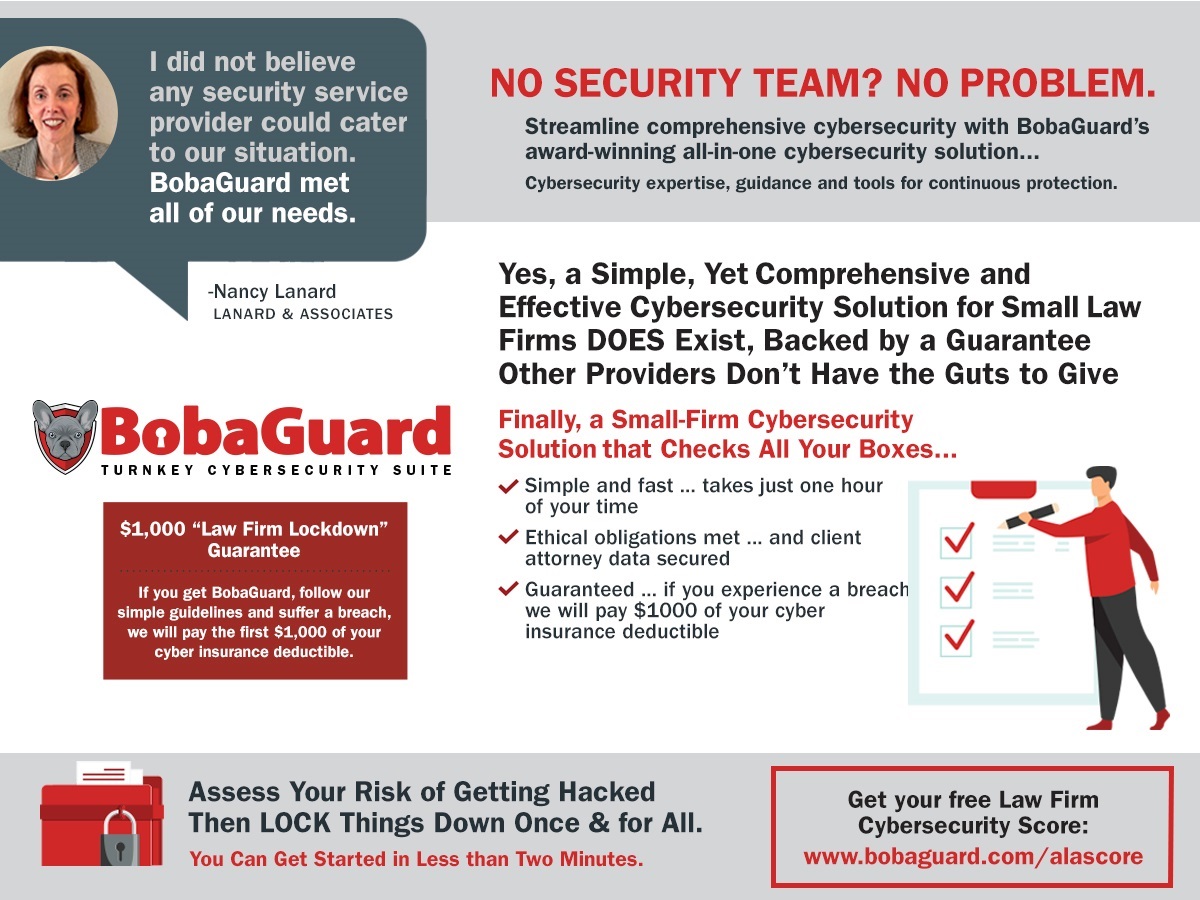An April 2022 report from Gartner notes that 73% of the Chief Executive Officers (CEOs) they surveyed expect a shortage of workers or skills to disrupt their business in 2023 — workers they will not be able to replace easily. These extended losses will not only continue to fracture workflow, but the resulting brain drain will wipe out generations of institutional knowledge. This challenge particularly affects smaller law firms, which may not have had the resources or scale for formal institutional knowledge retention.
Such knowledge, also called organizational memory, can be tangible — the documentation of procedures and training manuals, for example — or intangible — the practical wisdom of seasoned employees.
Retaining that tangible knowledge takes some work but is fairly straightforward: document processes and procedures and digitize them in an easily accessible format.
Preserving the intangible knowledge is trickier. When experienced employees leave, they take with them their best practices — their cheat sheets and processes, their key relationships inside and outside the company, and how things truly get done and who does them.
The accretion of employees’ memories builds the organization’s collective memory, enabling the business to function. Long-standing employees pass along this intangible wisdom informally, often by word-of-mouth. If best practices exist only in the employees’ minds or scattered on sticky notes, the chain of knowledge is irretrievably broken when they leave, especially if the exodus is massive and sudden, as with the Great Resignation.
This loss costs companies money, time and efficiency.
Beyond retaining more of their critical employees, how can firms preserve institutional knowledge? By making it a priority and having a plan. That’s why Holly Walters, Chief Operations Officer of Shapiro Law Team, implemented a firm-wide practice to safeguard information and keep their cases moving. “We want to ensure that everyone in our firm, from the receptionist to the managing attorney, knows what each team is responsible for.”
MAKE PLANNING A PRIORITY
Workforce turnover is a natural, even necessary, aspect of a company’s growth. Different phases of a firm’s life cycle require different skillsets, and strategic turnover eliminates ineffectiveness and keeps the firm nimble and adaptable to market changes.
Turnover becomes a challenge, however, when it is no longer natural — when it comes as a tsunami rather than a predictable ebb and flow. In the face of such vast and unexpected change, organizations default to a reactive mode, patching the levees holding in their institutional knowledge with sandbags that will inevitably be washed away. Instead of throwing sandbags at the problem, companies should build better levees. By being proactive and strategic in combating institutional knowledge drain, organizations can minimize the risk of unprecedented workforce attrition and keep their companies from going sideways. How? By creating a culture of knowledge sharing and the systems to support it.
“Preserving the intangible knowledge is trickier. When experienced employees leave, they take with them their best practices — their cheat sheets and rules of thumb, their key relationships inside and outside the company, and how things truly get done and who does them.”
This proactive strategy firm puts leaders back in control, and it won’t take a complete restructuring of your current processes to do it. It merely requires a renewed dedication to making institutional knowledge just that — institutional rather than individual.
Let’s explore seven methods to make that happen.
1. Identify, Prioritize and Educate
To preserve institutional knowledge, all employees must understand its importance. Create a company culture that values information sharing across the enterprise and has formal systems to support that sharing — information systems, data analytics, training systems. Avoid information silos and turf wars.
Then examine all levels of the business and identify the value and volume of existing institutional knowledge. Identify the key components and processes every team member should know, and prioritize what to capture and share. Think creatively. Do you only want to capture skill-based information or project management tools as well? Technology hacks or past strategic initiatives? Once you identify the knowledge you want to preserve, put those formal systems in place to do so.
2. Involve All Employees
Walters believes it is vital that all teams understand the important stages of any case from onboarding to settlement as well as knowing and completing the proper digital screens to keep the pipeline moving. In implementing their plan, the Shapiro management team worked with each of their teams to create checklists, training courses and desk manuals.
“The desk manuals, whether physical or online, are step-by-step guides for each team member and are set to be updated frequently,” Walters explains.
She not only shares these tools across teams but requires all new employees to cross-train with each team manager — new attorneys train with onboarding, new paralegals train with settlement and so on. Walters makes it clear that this is a management initiative and gives the leaders ownership of the process development and information gathering. Not only do these practices encourage knowledge sharing, but they make for higher-quality client service. When employees leave, the transition is fairly seamless.
3. Cross-Training and Transparency
The goal of cross-training is not to add to the employee’s workload but to expand their knowledge and engagement with the organization and create transparency about the demands and requirements of different roles. Transparency results when everyone’s duties are no longer shrouded in mystery and the culture is based on performance and collaboration, not competition.
“Start by asking your employees what resources they need. You’ll be amazed how many workers have their own cheat sheets already set up. Create a general location for these lists and encourage people to use them.”
Make it a priority by incorporating it into the employee’s performance review. Create a quarterly goal with specific timelines, departments and partners; then have everyone discuss what they learned. Such conversations let you know how well the firm is adopting the information-sharing culture.
Walters notes when the firm implemented transparent cross-training, it saw less competition and greater collaboration among departments along with more efficient knowledge sharing. Plus, it resulted in increased productivity.
4. Mentorship Initiatives
In any organization, mentors — veteran employees who help newbies learn the ropes — are often the ones passing down institutional knowledge. The problem is, most mentorships are ad hoc and informal. The answer: Make them formal. Create a program that pairs veteran staff with less-seasoned employees.
Harleigh Jones, a former Firm Administrator in Arizona, developed a training program that relied on veteran employees. “Having a mentor training system reduced barriers to the firm’s knowledge preservation as it became a natural training tool,” Jones explains. Veteran employees pass along what they know, eliminating the temptation to hoard information that wreaks havoc, especially on smaller firms.
For a mentorship program to succeed, it must be part of the job description, not an add-on. Make it a structured program. Create rewards and incentives for the mentors to do a good job, such as bonuses, extra planned time off (PTO) or recognition. Implant the value of mentorship in the DNA of every role.
5. Create a Learning Library
Encourage employees to build spreadsheets, folders and drives thick with lists of processes, contacts, providers, referral sources, white papers, articles, email chains, videos and so on. Encourage employees to update the information as a matter of course.
Start by asking your employees what resources they need. You’ll be amazed how many workers have their own cheat sheets already set up. Create a general location for these lists and encourage people to use them.
To curate and disseminate the firm’s institutional knowledge, establish the role of Knowledge Librarian as part of the training team. This is a critical function in the Information Age.
6. Implement Succession Planning
Most firms have some version of succession planning at the C-level, but it is often overlooked at the employee level. At all levels, succession planning is an important strategy not only for replacing workers but also for passing on knowledge and skill sets.
Jones faced this challenge when she scheduled a three-week vacation. “I needed to know who could take over for me at any given moment. I began looking at their strengths and weaknesses and distributed my workload accordingly.” Implementing this strategy in a formal way enables more seamless coverage for PTO, internal promotions and turnover.
“When you need to change the water filter on your fridge, you look up a video. The same concept applies to institutional knowledge.”
When a worker is promoted, for example, give them the time to train their successor. They’ll be happy to share their tips, tricks and efficiencies to leave the role in better shape than they found it. Likewise, when an employee leaves the company altogether, have them train their replacement. Sometimes, for legal reasons, this isn’t possible. That’s why promoting a culture that requires an ongoing documentation of work processes and best practices is critical. If someone leaves the company today, their replacement should be able to review the documentation and get up and running by the end of the week.
7. Capture It with Video
When you need to change the water filter on your fridge, you look up a video. The same concept applies to institutional knowledge. Digitally archived written records are a valuable resource for retaining institutional knowledge, particularly in its tangible forms. Video preserves intangible forms of knowledge more effectively than text because it allows for demonstration as well as explanation.
According to Forrester Research, 75% of employees would rather watch a video than read an email or manual. Recording key project discussions, strategy meetings and tutorials not only captures a team’s processes and agendas, it conveys the hidden context and nonverbal communication between the lines.
Firms can incorporate video technologies into many of the aforementioned methods. For example, as an element of succession planning, you can create an “Ask the Expert” forum in which retiring employees discuss their roles and best practices. Video records can also support cross-training initiatives without interrupting busy colleagues.
GROW OR WITHER — IT’S YOUR CHOICE
Like human memory, organizational memory can grow or wither. Creating a strategy for preserving institutional knowledge not only makes your business more resilient when employees move on, it strengthens your business’s long-term innovation and growth, leading to greater engagement and less turnover. By engaging your employees as active participants in developing and capturing institutional knowledge, you not only preserve and build that knowledge, you also encourage your employees to stick around.


